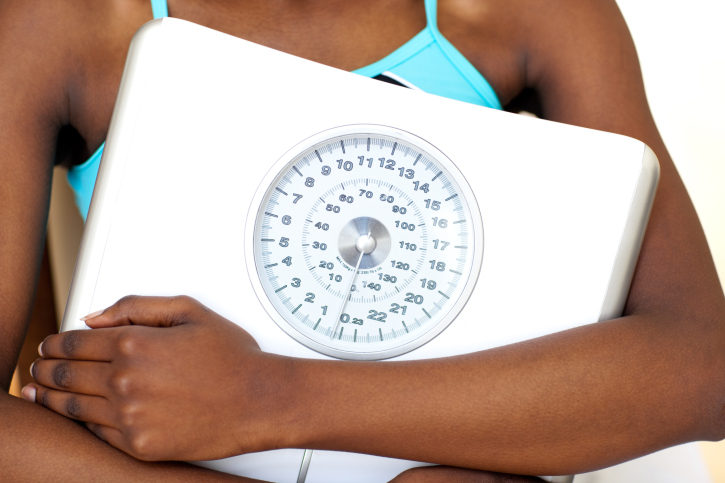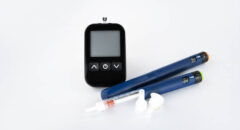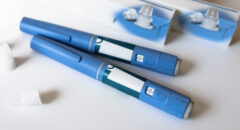 Weight loss is one of the best ways to prevent type 2 diabetes and in those who already have diabetes, weight loss can reduce blood glucose—also called blood sugar. Weight loss can also decrease insulin resistance, which means your pancreas won’t need to work as hard to produce insulin and less insulin will be needed to control blood glucose. Besides improving blood sugar control, losing as little as 10 – 15 pounds can improve blood cholesterol and triglyceride levels, improve blood pressure, and help you to live longer with a better quality of life.
Weight loss is one of the best ways to prevent type 2 diabetes and in those who already have diabetes, weight loss can reduce blood glucose—also called blood sugar. Weight loss can also decrease insulin resistance, which means your pancreas won’t need to work as hard to produce insulin and less insulin will be needed to control blood glucose. Besides improving blood sugar control, losing as little as 10 – 15 pounds can improve blood cholesterol and triglyceride levels, improve blood pressure, and help you to live longer with a better quality of life.
There are perhaps a thousand different, weight-loss plans out there – maybe more. But the key to all of them hinges on this fact: to lose weight you simply need to eat less than you usually do.
Of course, eating less is easier said than done. That is until now. A growing body of research suggests that prebiotics may be the help you need to curb your appetite, which will naturally help reduce your portions.
WATCH: How To REALLY Eat Well With Diabetes
What are Prebiotics?
Probiotics often are confused with prebiotics. Probiotics are live microorganisms-bacteria that are either the same as or similar to bacteria found naturally in your body and may be beneficial to health. Unlike probiotics, prebiotics aren’t bacteria; they stimulate the growth of healthy bacteria in the gut. Dr. Raylene Reimer, Ph.D., R.D., Associate Professor in the Faculties of Kinesiology and Medicine at the University of Calgary describes prebiotics as food ingredients that help the beneficial bacteria that live in our intestine to prosper and grow. “In contrast to probiotics where a person consumes the beneficial bacteria themselves, prebiotics are a specialized food supply for the healthy bacteria already living in our intestines,” says Reimer.
Where Are Prebiotics Found?
Chicory root – the top source of prebiotics, provides two types of natural fiber found in everyday foods: Inulin and Oligofructose. Inulin is moisture-enhancing and adds a creamy texture to foods. Oligofructose promotes fullness.
Other natural food sources of prebiotics include Jerusalem artichoke, banana, dandelion greens, asparagus, wheat bran, wheat flour, garlic leeks, and onions. You will also find prebiotics added as an ingredient to foods such as yogurt, ice cream, chocolate bars, breakfast bars, salad dressings, and margarine. You won’t find prebiotics on the nutrition fact panel of these foods. You will need to read the ingredient list to determine if prebiotics have been added. Look for inulin, oligofructose or chicory root fiber in the ingredients. Prebiotics are also available as powdered, gum or liquid supplements.
How Do Prebiotics Help With Weight Loss?
Dr. Reimer, who has conducted numerous studies with inulin and oligofructose says there is evidence that prebiotics...
...help with appetite control including decreasing hunger and increasing the feeling of fullness. “Prebiotics also help to stop the slow creeping weight gain that happens to most adults as we move through the decades of our life,” says Reimer. Prebiotics added to foods also help reduce calories. Partially replacing sugars and carbohydrates or fats in a food with inulin and/or oligofructose, can reduce calories because chicory root fiber provides only 1-1.5 calories per gram compared to 4 calories per gram of sugars and carbohydrates and nine calories per gram for fats.
How Much Prebiotic Is Recommended?
There are no evidenced-based recommendations for a daily amount of prebiotics. However, the 2015 Dietary Guidelines for Americans recommend women aim for at least 25 grams of fiber per day and men should aim for 38 grams of fiber daily. Most Americans fall short of these recommendations putting them at risk for weight gain and poor blood sugar control. Eating natural food sources of prebiotics and including foods with inulin and oligofructose added, can help you get the prebiotics you need to promote weight loss and help manage diabetes.
 Constance Brown-Riggs, MSEd, RD, CDE, CDN is a registered dietitian, certified diabetes educator, national speaker and author of The African American Guide to Living Well with Diabetes. She is a Dannon One Yogurt Every Day Nutrition Advisor.
Constance Brown-Riggs, MSEd, RD, CDE, CDN is a registered dietitian, certified diabetes educator, national speaker and author of The African American Guide to Living Well with Diabetes. She is a Dannon One Yogurt Every Day Nutrition Advisor.








